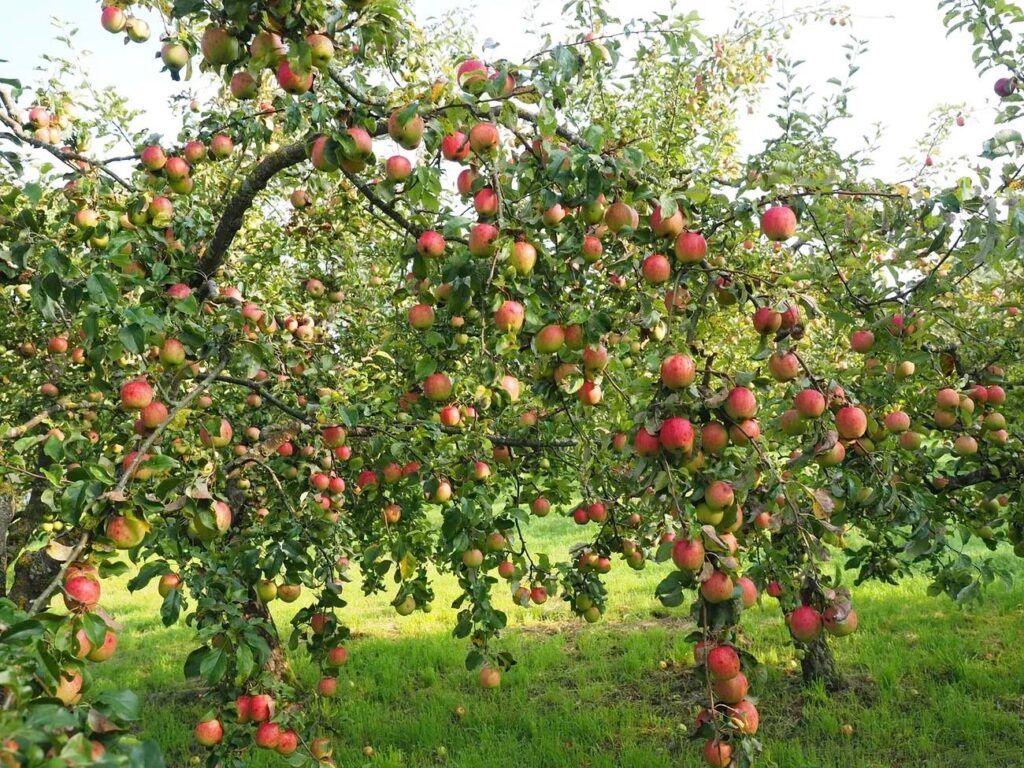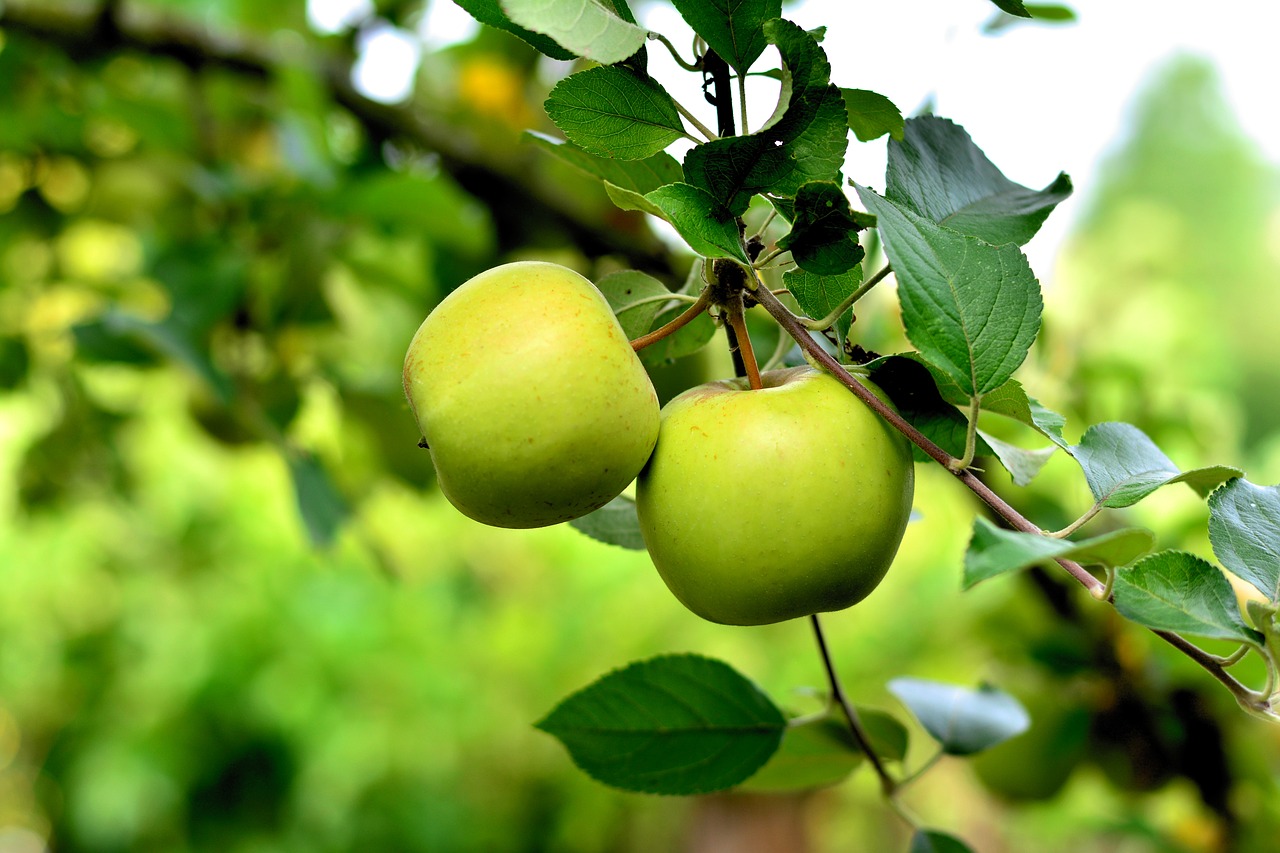How to Grow Apple Trees – Apple trees are not only beautiful additions to any garden or orchard, but they also provide delicious fruit that can be enjoyed fresh or used in a variety of culinary delights. However, successfully growing apple trees requires careful planning, attention to detail, and proper maintenance throughout the year. In this comprehensive guide, we will walk you through the steps to grow healthy and fruitful apple trees in your own backyard.

Introduction to Growing Apple Trees
Growing apple trees can be a rewarding experience, but it’s essential to understand the basics before getting started. Apple trees require specific growing conditions and care to thrive and produce high-quality fruit. Whether you’re a novice gardener or an experienced enthusiast, this guide will equip you with the knowledge needed to grow thriving apple trees.
Choosing the Right Apple Tree Variety
The first step in growing apple trees is selecting the right variety for your location and preferences. With hundreds of apple tree varieties to choose from, it’s crucial to consider factors such as climate, soil type, and desired fruit characteristics. Some varieties are better suited for warmer climates, while others thrive in cooler regions. Additionally, consider whether you prefer sweet, tart, or dual-purpose apples when selecting your tree.
Selecting an Ideal Location
The success of your apple trees largely depends on the location where they are planted. Apple trees require ample sunlight, well-drained soil, and proper air circulation to thrive. Before planting, assess your garden or orchard to determine the best location based on these requirements. Additionally, consider factors such as frost pockets and wind exposure, as these can affect the health and productivity of your trees.
Planting Apple Trees
Once you’ve selected a suitable variety and location, it’s time to plant your apple trees. The best time for planting depends on your climate, but it’s generally recommended to plant in early spring or late fall when the weather is cool and the soil is moist. When planting, dig a hole slightly larger than the tree’s root ball and ensure that the tree is planted at the same depth as it was in the nursery. After planting, water the tree thoroughly and mulch around the base to retain moisture and suppress weeds.
Providing Care and Maintenance
To ensure the health and productivity of your apple trees, it’s essential to provide proper care and maintenance throughout the growing season. This includes regular watering, fertilizing, pruning, and monitoring for pests and diseases. Apple trees have specific nutrient requirements, so be sure to fertilize according to the recommendations for your variety and soil type. Additionally, prune your trees annually to remove dead or diseased branches and promote healthy growth.
Ensuring Pollination
Pollination is a critical step in the apple tree growing process, as it is necessary for the development of fruit. While some apple varieties are self-pollinating, others require cross-pollination with a compatible variety to produce fruit. To ensure successful pollination, plant at least two compatible apple tree varieties within close proximity to each other. Additionally, consider attracting pollinators such as bees to your garden to aid in the pollination process.
Protecting Against Frost and Harsh Weather
Apple trees are susceptible to damage from frost and harsh weather conditions, especially during the spring when they are in bloom. To protect your trees, consider planting them in a location with good air drainage to reduce the risk of frost damage. Additionally, cover your trees with frost blankets or construct temporary shelters during periods of extreme cold to prevent damage to blossoms and young fruit.
Harvesting Apples
After months of care and attention, the time will finally come to harvest your apples. It’s essential to harvest apples at the peak of ripeness for the best flavor and texture. Look for signs of ripeness such as firmness, color, and ease of detachment from the tree. When harvesting, twist the apple gently to detach it from the tree, taking care not to damage the surrounding fruit or branches.
Conclusion
Growing apple trees can be a fulfilling and rewarding experience for gardeners of all skill levels. By following the steps outlined in this guide, you can cultivate healthy, productive apple trees that will provide you with an abundance of delicious fruit for years to come.
FAQs
1. How long does it take for an apple tree to bear fruit?
Apple trees typically take 2 to 5 years to bear fruit, depending on the variety and growing conditions.
2. Do apple trees require a lot of maintenance?
While apple trees require some maintenance, such as pruning and fertilizing, they are relatively low-maintenance compared to other fruit trees.
3. Can apple trees grow in containers?
Yes, certain dwarf apple tree varieties can be grown in containers, making them suitable for small gardens or patios.
4. How do I know if my apple tree is diseased?
Signs of apple tree disease include discolored or spotted leaves, abnormal growths on branches, and premature fruit drop. If you suspect your tree is diseased, consult a local gardening expert for diagnosis and treatment options.
5. What can I do with excess apples?
Excess apples can be used to make a variety of delicious treats, including pies, applesauce, and cider. Alternatively, consider donating surplus fruit to local food banks or community organizations.




